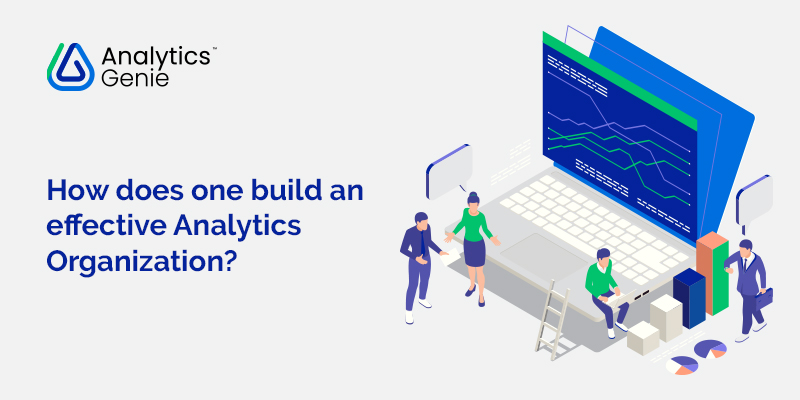Today, there is no debate about the need for data analytics in organizations, be it to compete on analytics or leverage it for informed decision-making and improve competitiveness. The question, rather is, on how to use Big Data analytics better and build it into one of the top analytics companies. As a McKinsey survey shows, only 20 percent of those who have piloted an analytics project are able to scale up and maximize the potential. There are many factors that contribute to the failure of realizing the benefits, one of the primary reasons being lack of a clear strategy.

To build a truly effective business analytics organization, companies need to design projects with an end-to-end approach with the aim to fulfil business needs.
The project should also align with the culture of the organization such as the risk appetite, inclusive practices and innovation. This will help win the trust of the various stakeholders to make the project acceptable across the board.

The Key Ingredients for an Effective Analytics Organization
According to Deloitte, businesses embarking on an analytics journey should establish goals, which would include:
• Empowering business decision makers with analytical capabilities
• Enabling enterprise-wide collaboration on analytics projects with a team drawn from across functions and a leader to spearhead the project
• Providing capabilities to help demystify analytics for different teams across the organization and increase visibility of the project
• Standardizing methodological approaches, tools, and processes for drawing business intelligence
• Keeping pace with changes in analytical practices
• Making the delivery of analytical outcomes cost-effective
• Building and monitoring capabilities and experience for analytics
A capable and effective analytics organization can be built by:
1. Aligning the Business and Analytics Goals: Define the problem you’re trying to solve with the analytics project, set the goal and set metrics to measure the success the project. Use a plan, do, check and act approach for continuous improvement. Review progress periodically and modify when needed based on whether the project is progressing as planned and if the goals have remained unchanged since starting.
2. Allocate Resources: The success of any advanced analytics project depends on the leadership commitment, expressed in the form of allocation of resources – be it investment of money, time or people. Being involved in the review process and quick decision making to continue or change will also rest on the leader to steer this in the right direction.
3. Sourcing the Right Talent: While analytics tools are an important ingredient, there are many available. Investing in the one that fits your specific needs and can ensure meeting your business analytics objectives is essential and requires a team with experience to determine that. Therefore, hiring a team with the right skills, attitude and capabilities is important to building an effective analytics organization.
4. Setting the Right Process – Data governance and security are not only regulatory requirements but also essential for protecting stakeholder interests and data privacy. Defining the policies and ensuring their continued enforcement, review and training are important when working with data for internal use or as a revenue stream.

5. Getting the Right Technology: Analytics can be of three types: descriptive, predictive, and prescriptive. Each needs a different kind of data and processes. While in descriptive analytics, historical data and trends are used for creating reports, for predictive analytics, a combination of historical and real time data enables forecasting trends. In prescriptive analytics, actions are recommended based on descriptive and predictive analytics. Getting the right tools that can pull data from enterprise-wide data sources and provide a unified view to create the required reports and dashboards is critical for providing meaningful insights.
6. Have Metrics to Measure: What cannot be measured cannot be managed. Establishing metrics and periodically reviewing the progress of the data analytics project against those metrics is essential for mid-course correction, if required. Small wins will also encourage the stakeholders to work on it with greater commitment.
In addition to setting up processes, providing the right tools and the right team, businesses must ensure they have the needed data to make the project a success. Leadership commitment, proper supervision of the data scientists and analysts as well as providing them with a career path will improve engagement and commitment levels. It is also important to analyze the need for external consultants for some specializations where there is a short-term requirement.
Conclusion
According to Forrester Research, insights-driven businesses experience an average of more than 30% year-on-year growth and were expected to take $1.8 trillion annually by 2021 from their peers who were not leveraging data. Most businesses have access to data today but are unable to get insights or convert those insights into outcome and grow. But those who get their strategy on people, process, technology and data right can building an effective analytics organization and reap the benefits quickly.
Blurb: While analytics has become essential for survival and growth, a capable team with the right technology and processes is essential to build an effective analytics organization

Leave a Reply